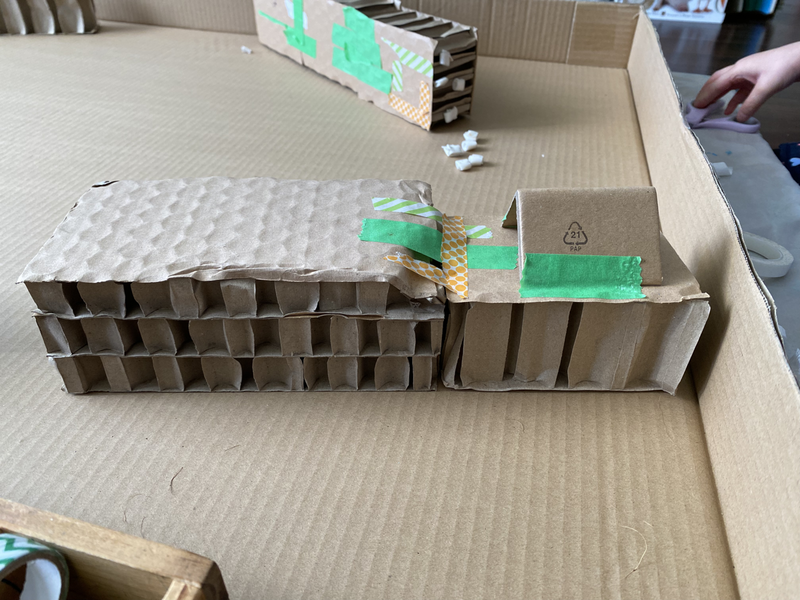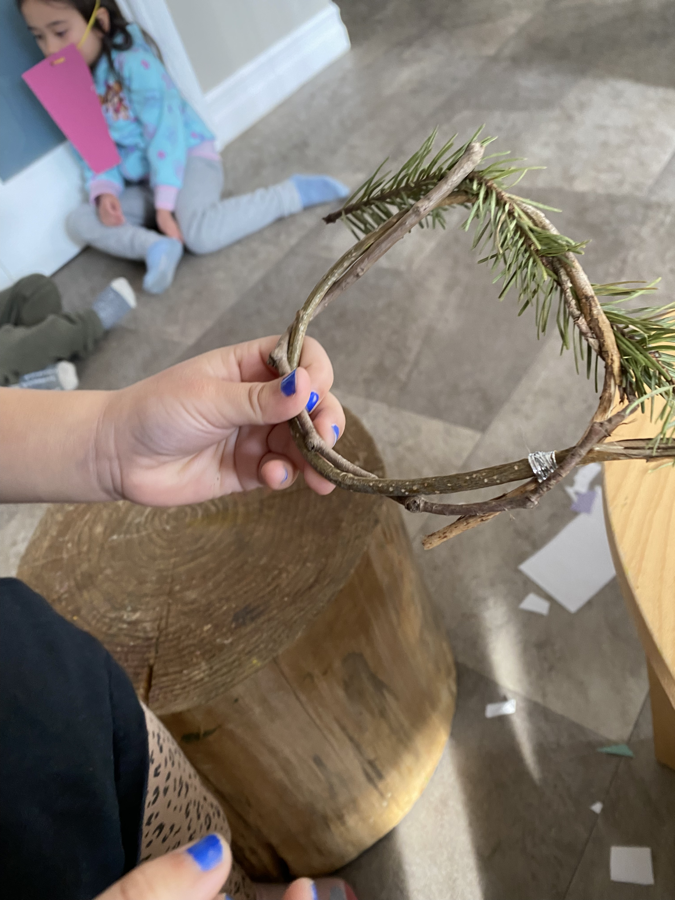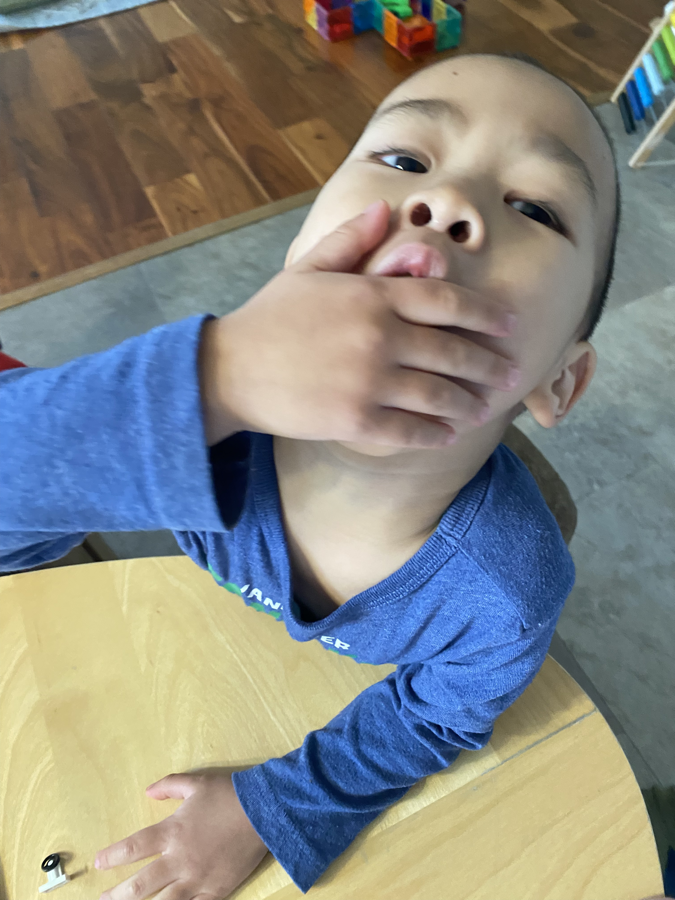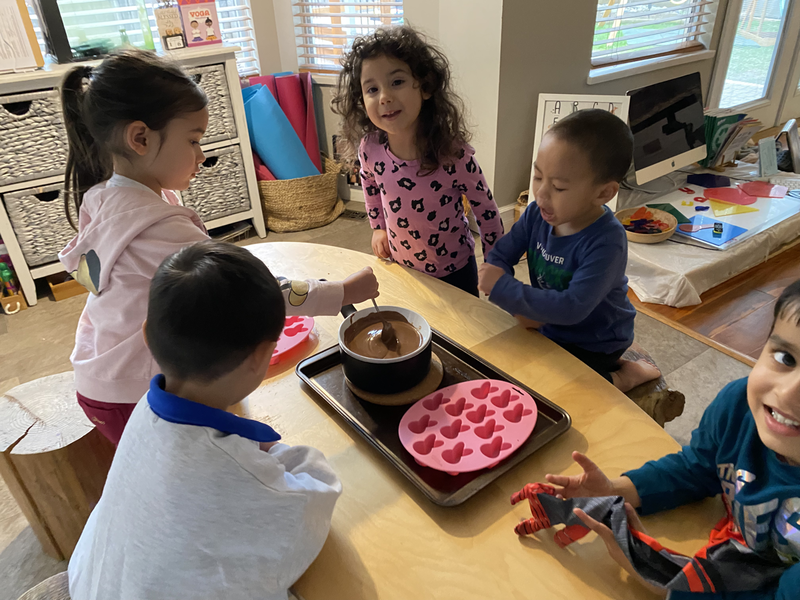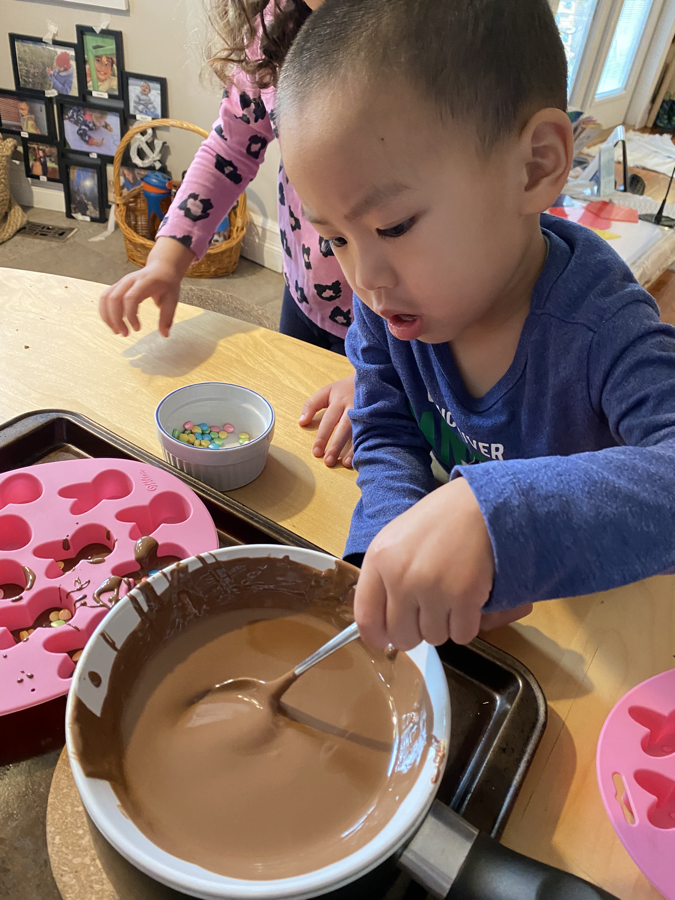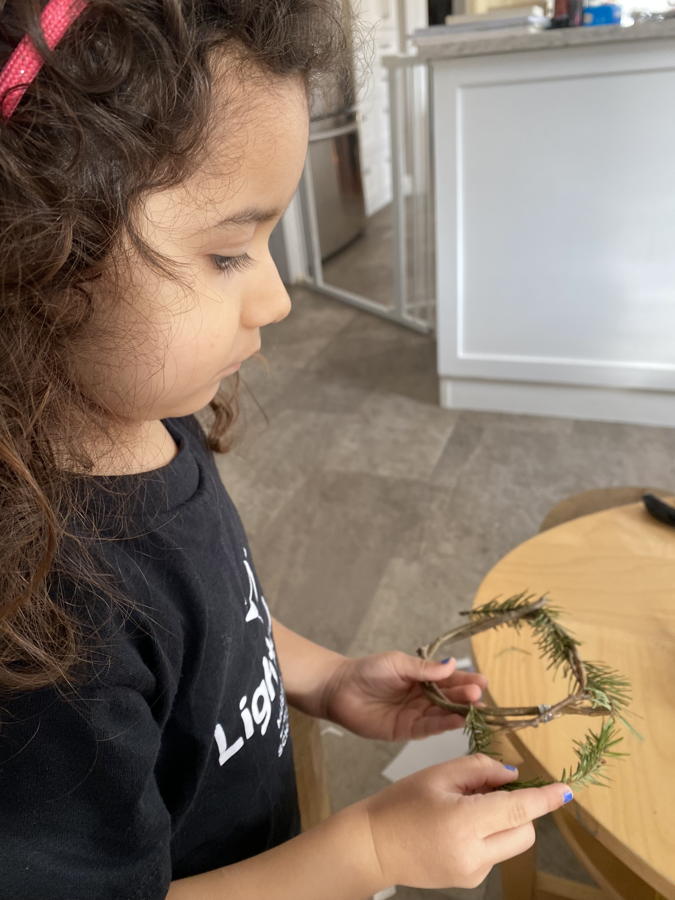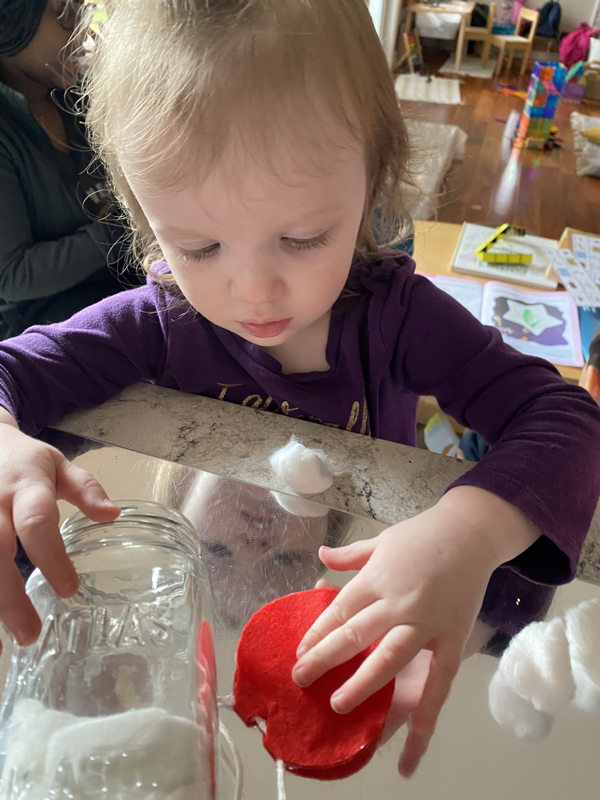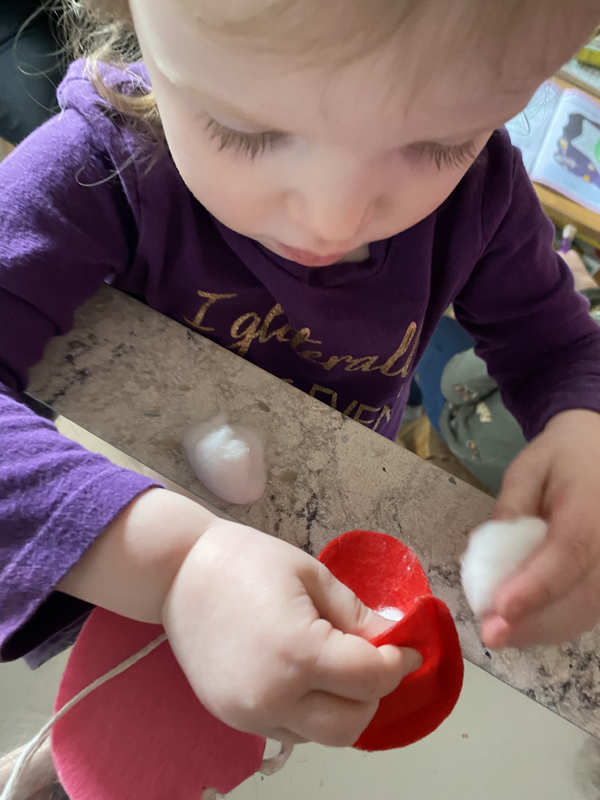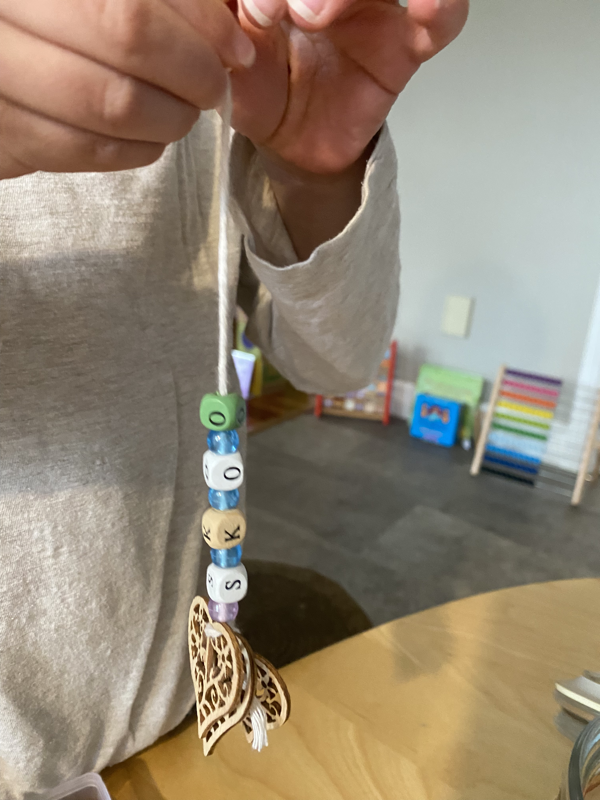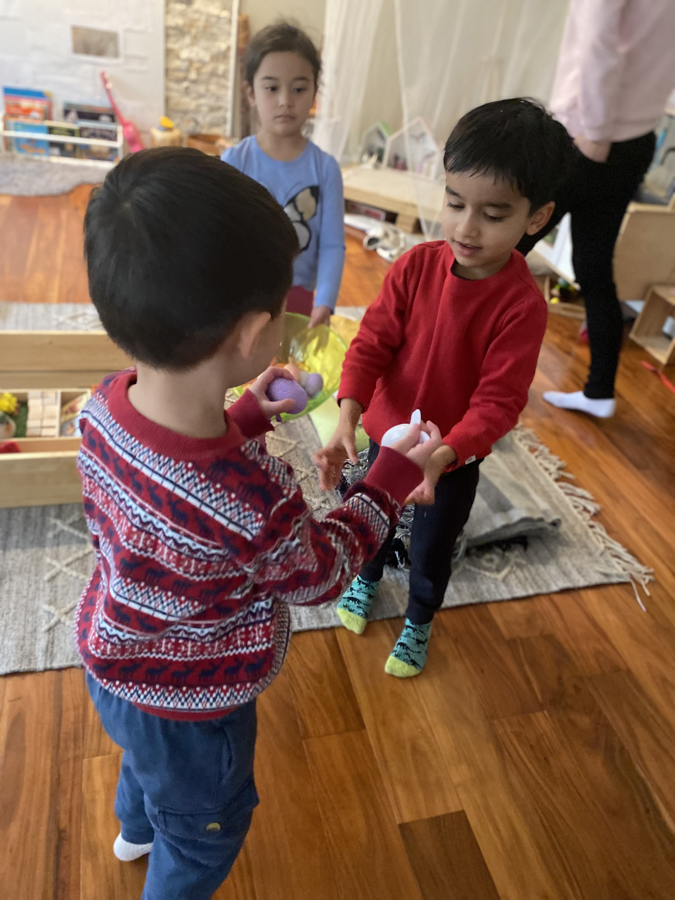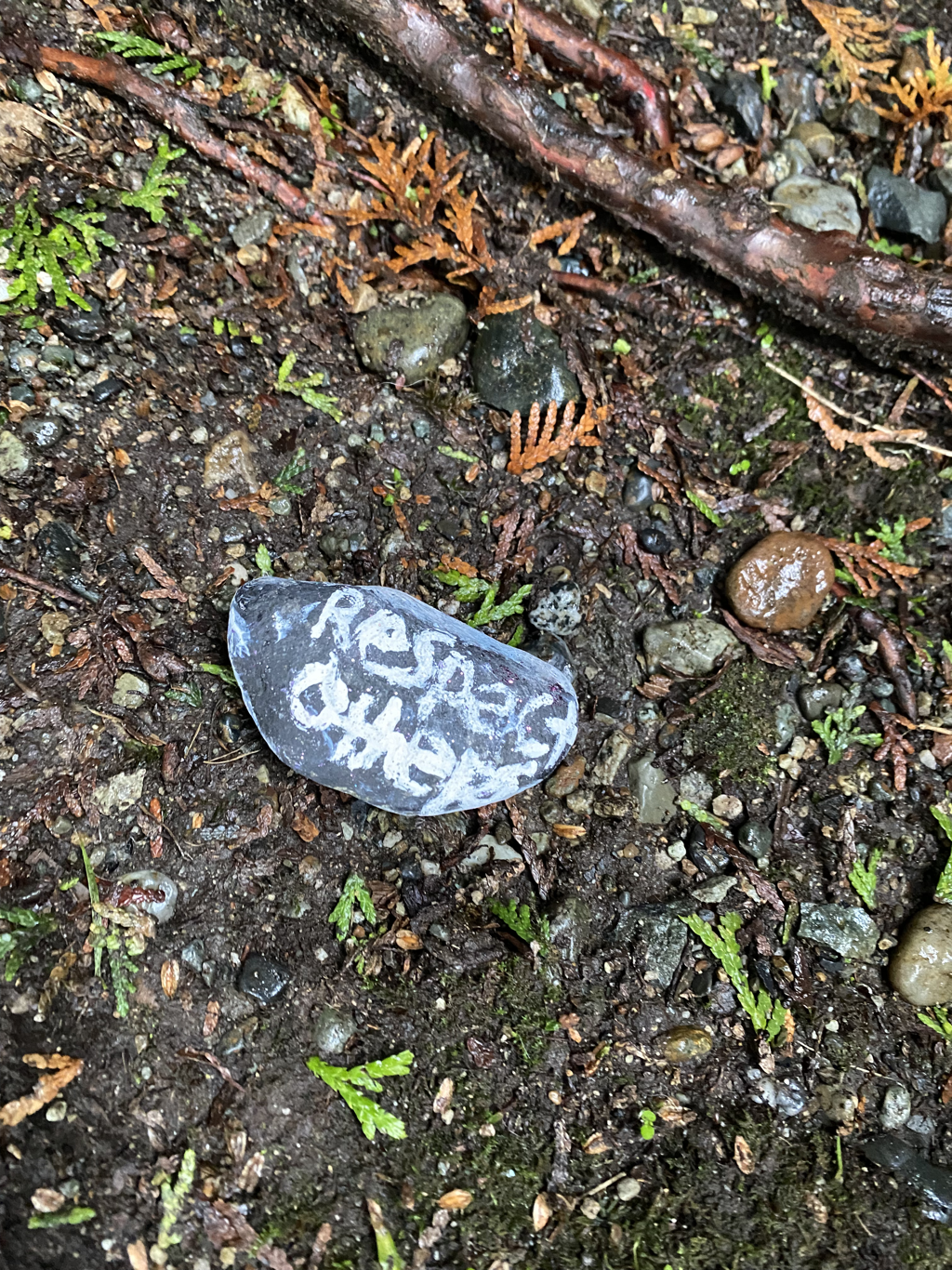|
As Fides and Jana were working with the monster trucks on the overhead projector, he points out the shadow it projected onto the ceiling. The shadow makes Fides think and notice the difference in colour between the actual object and shadow. He asks, “Why is the shadow black?”. Jana’s reflection - I was left thinking and wanted to see what his thoughts are by asking him the same question. The question leaves Fides thinking with the question as he carefully observed the shadow on the ceiling. Perhaps we can offer this question to the rest of the children to gain their insights and create an experience for them where we can explore with colours and shadows. We can also potentially offer them to visualize their ideas regarding the question. Moving forward and backward to figure out how the light behaves has been instigated by Yoyo. He engages his body to interact with the light and its relationships to change the way the light works and observes how it responds on the white screen. A this juncture of learning, we offer ourselves another insight by pondering upon this question, "What is the relationship between shadows and silhouettes?" ”Are they not the same?” “If they are the same, then why do they have two different names?’ While referring to his image on the white screen, Felix mentions, "It's silhouette". He seems to be able to recognize the concept of silhouette as a two-dimensional representation of the outline of his face including more details. After his observations of his friends and their movements in front of the source of light, Fides walks past to smile to his shadow. Hudson sees and invites his reflection by saying, “Hi, Hudson”. Hudson notices when asked to look up to notice what's happening to the ambulance being placed on top of the light projector. He pays attention to it prior to saying, "Shadow". Yoyo starts comparing his reflection with the reflection of the blocks. He asks, “Why my reflection is black however I can see the colors of the toys?”. Manpreet’s reflection - It also forced me to think about why our reflection is black. For extending their explorations, I asked them what they think why is it black? Then Elie replied, “Because it loves to be black and black is it’s favourite colour to give us”. Elie has been observed to watch how the light reacts with the various objects. Does it shine through or shine back at us? Throughout the experiment we discover that solid objects will not allow light to pass through. We manipulate the many ways light being projected through opaque, translucent, and transparent media, sometimes from the top, from the side, or from the bottom. Brooks comes up with an idea to alternatively place the flashlight on top of two different objects - opaque and transparent - simultaneously. Without realizing, this moment provides another eureka moment for us. By observing the events we realize something interesting is taking place. When the flashlight is being placed to the closest distance to a transparent object, we notice the transparent object does not block the light. Instead it 'spreads' the light to create a more expanded lighted-up area around it. This discovery pushes our thinking further of the characteristic of light. Elie shines the flashlight to her feet while holding it upright. She mentions, "The shadow is hiding under my feet". We make connections between our discovery of the light and its transparency characteristic to our daily learning experiences. The kindness rocks are kind of related to the way the light behaves through transparent or translucent media. During our group discussion, each one of us shares what we mean by "kindness" - Elie: "I hug my mom". Brooks: "I share my motorcycle with friends at school". Felix: "I am being helpful". Fides: "When I wake up, I eat and finish my food". Luna: "I like to hug". We think it's important to bring our kindness rocks outdoors to leave them for others around us. During our shared interests of going for a bear hunt we agree to build friendship with 'friendly bears' as friends. Friends paint rocks to decorate with an inspirational message. The point of these rocks are to sprinkle positivity around our community. We choose to hide the rocks for others to find! We want someone to actually find the rock. Through leaving messages through our kindness rocks to others around us make us think of how we ourselves should live with it. We understand it requires various ways to live in what we say or think. "Boundaries are essentially about understanding and respecting our own needs, and being respectful and understanding of the needs of others," explains Stephanie Dowd, PsyD, a clinical psychologist, "and for that to work, we need to be putting a big emphasis on helping children develop greater empathy and self-awareness." Setting healthy personal boundaries and being able to recognize others as well is paramount for building relationships. And if we are not used to examining our own, it can be uncomfortable when we grow up. The earlier we learn about our own limits and see the importance of respecting others, the more natural it will be for us to navigate healthy relationships. Kindest,
Children & Friends.
0 Comments
Leave a Reply. |
No part of this publication may be reproduced, distributed, or transmitted in any form or by any means, including photocopying, recording or any other electronic or mechanical methods, without the prior written permission of the publisher.
Archives
July 2024
|
